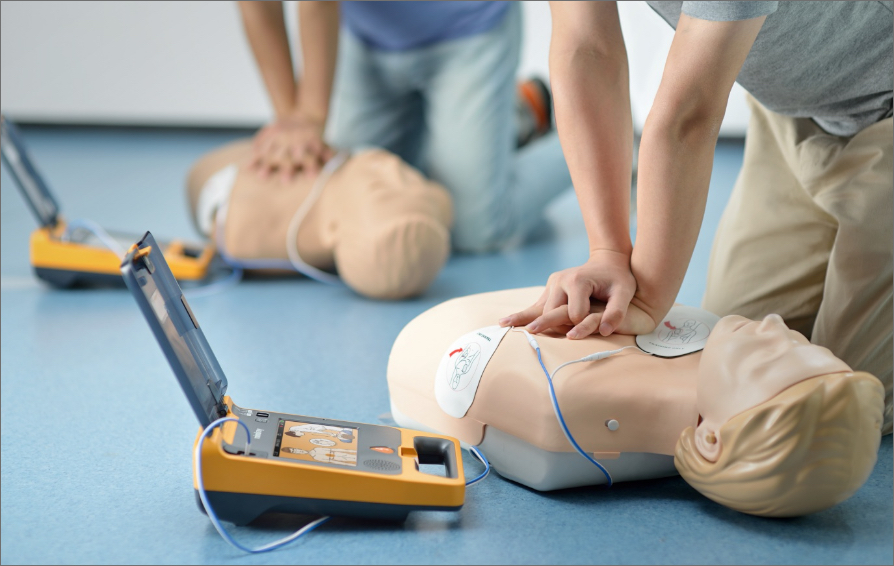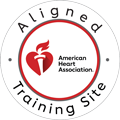In life-saving scenarios, every second counts. Cardiopulmonary resuscitation (CPR) is a critical intervention for patients in cardiac arrest, and the quality of chest compressions plays a pivotal role in patient outcomes. Central to this is the chest compression fraction (CCF), which refers to the percentage of time during CPR when chest compressions are actively being delivered. A high CCF ensures that blood continues circulating to vital organs, increasing the chances of survival and preserving neurological function. This article explores the importance of achieving a high chest compression fraction, strategies to maximize compression time, and the long-term benefits of continuous CPR skill development.

Understanding Chest Compression Fraction
Chest compression fraction is a measure of how efficiently CPR is performed. It is defined as the proportion of time during a resuscitation attempt that rescuers deliver chest compressions. For optimal outcomes, the American Heart Association (AHA) recommends a CCF of at least 80%. Studies have shown that higher CCF values correlate with improved survival rates and better neurological outcomes in cardiac arrest patients. This is because uninterrupted compressions maintain coronary and cerebral perfusion, which are essential for restoring spontaneous circulation.
Key Strategies to Maximize Chest Compression Fraction
Maximizing chest compression fraction requires a multi-faceted approach. First, minimizing interruptions is crucial. Pauses in chest compressions, even brief ones, significantly reduce blood flow to the brain and heart. Continuous chest compressions are vital, and rescuers should aim to reduce pauses during interventions such as defibrillation or airway management. Team-based resuscitation approaches can also improve CCF by ensuring smooth transitions between rescuers. Proper planning and communication allow for efficient rescuer rotation, preventing fatigue and maintaining consistent compression quality.
Minimizing Interruptions
In addition to minimizing interruptions, mastering proper compression techniques is essential. Effective compressions involve correct hand placement, ensuring the hands are positioned over the lower half of the sternum. The recommended compression depth for adults is 2 to 2.4 inches (5 to 6 cm), with a rate of 100 to 120 compressions per minute. Consistency in compression depth and rate is vital, as shallow or excessively fast compressions compromise perfusion. Rescuers must also avoid leaning on the chest between compressions, as full chest recoil allows the heart to refill with blood. Attention to these details ensures the effectiveness of each compression cycle.
Advanced Monitoring and Feedback Technologies
Advanced monitoring and feedback technologies offer valuable tools for improving CCF. Real-time CPR quality monitoring devices provide immediate feedback on compression depth, rate, and chest recoil, allowing rescuers to adjust their technique during resuscitation. Automated feedback systems, often integrated into defibrillators, guide rescuers to optimize their performance. Mechanical CPR devices, such as automated chest compression machines, ensure consistent compressions when manual efforts are not feasible. Additionally, data from these devices can be analyzed post-resuscitation to identify areas for improvement, contributing to ongoing performance enhancement.
Training and Skill Maintenance
Regular training and skill maintenance are fundamental to achieving a high chest compression fraction. Even experienced healthcare providers benefit from periodic CPR training to reinforce best practices and improve muscle memory. Simulation-based learning offers realistic scenarios that mimic the pressures of actual resuscitations, helping participants refine their techniques. To address skill decay, which can occur within months of training, institutions should implement regular refresher courses and practice sessions. Continuous performance improvement methods, including debriefing after real events, ensure that rescuers remain proficient and confident in their abilities.
Call Us Now
Get the Best CPR Class in Kansas City Today!
Clinical Environment Considerations
The clinical environment presents unique challenges that can impact chest compression quality. In hospital settings, interruptions may occur during procedures such as intubation or medication administration. Pre-hospital environments, such as ambulances or field settings, introduce additional variables, including limited space and uneven surfaces. Adapting compression strategies to these scenarios requires flexibility and the ability to prioritize uninterrupted compressions. Equipment, such as backboards or portable CPR devices, can also affect compression quality and should be selected carefully to optimize performance.
Performance Measurement and Quality Improvement
Measuring and improving CCF is a critical component of institutional CPR quality improvement programs. Methods for measuring CCF include the use of defibrillators with built-in analytics and CPR recording devices. Data collection during resuscitation provides valuable insights into compression duration and effectiveness. Analyzing this data allows institutions to identify patterns and implement protocols to enhance CPR performance. Benchmarking against established performance standards ensures that resuscitation teams strive for excellence in patient care.
A high chest compression fraction is integral to successful resuscitation outcomes. By minimizing interruptions, mastering compression techniques, leveraging advanced feedback technologies, and committing to regular training, rescuers can optimize their CPR performance. The long-term impact of high-quality chest compressions extends beyond survival, improving neurological outcomes and overall patient recovery.
Conclusion
Achieving a high chest compression fraction is a critical component of effective CPR, directly improving the chances of survival in cardiac arrest cases. Consistent compressions with minimal interruptions are the cornerstone of high-quality CPR, emphasizing the importance of proper training and technique. By mastering these skills, you can make a life-saving difference when it matters most.
Take the first step in becoming a confident and competent responder by enrolling in CPR certification in Kansas City or BLS certification in Kansas City. CPR Kansas City, an American Heart Association training site, offers stress-free, hands-on classes tailored for both healthcare providers and the general public. Whether you’re seeking initial certification or renewal, CPR Kansas City provides the expertise and support you need to succeed.
Don’t wait—equip yourself with the knowledge and skills to save lives. Visit CPR Kansas City today and sign up for a class to make a real difference in your community.


